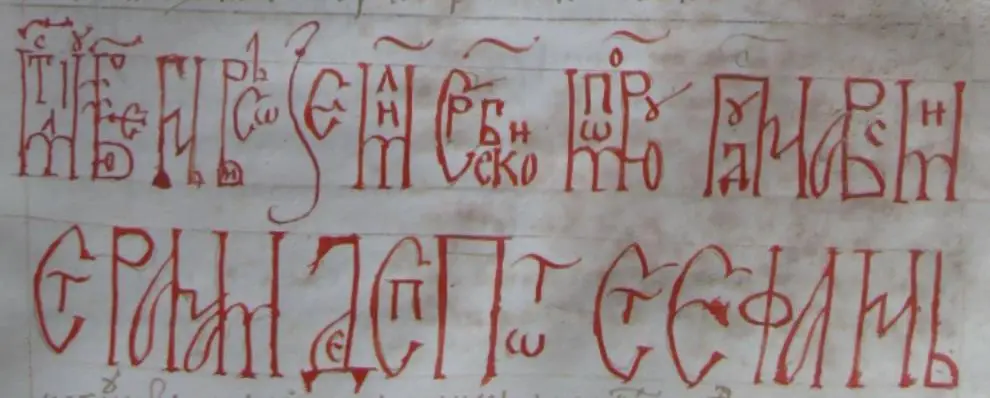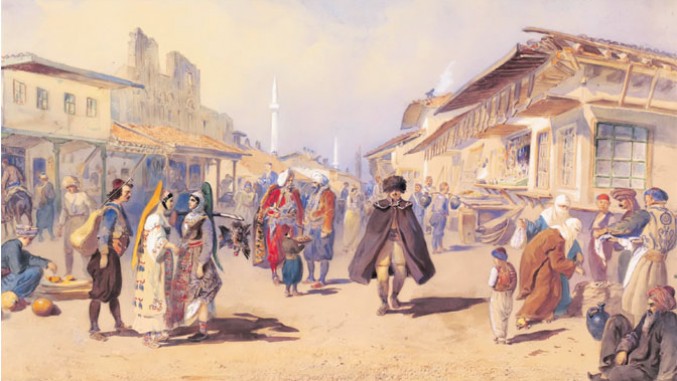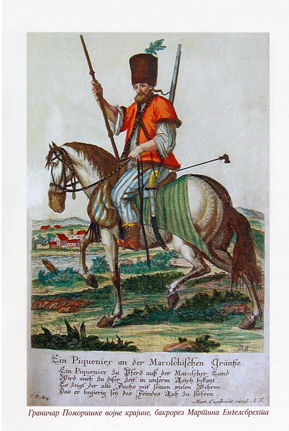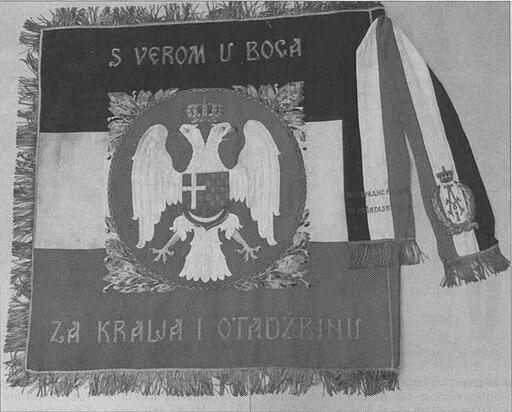Original research paper by Mirčeta Vemić, Institute of Geography “Jovan Cvijić”, Serbian Academy of Arts and Sciences: http://www.doiserbia.nb.rs/img/doi/0352-5732/2014/0352-57321447201V.pdf
UDC 94(100)”1914/1918″
UDC 343.819.5(=163.41)(493.5)”1914/1918″
DOI: 10.2298/ZMSDN1447201V
Translated by Books of Jeremiah
CONCENTRATION CAMP HEINRICHSGRÜN (Czech: JINDŘIHOVICE)
(K. u. k. Kriegsgefangenenlager Heinrichsgrün)
66.000 internees, 4.306 victims, 2.573 grave sites for Serbs Concentration camp Heinrichsgrün, or “Imperial and Royal Camp for Prisoners of War Heinrichsgrün” (Kaiserliches und Königliches Kriegsgefangenenlager Heinrichsgrün), was created in the settlement of Jindřichovice, which in Austro-Hungarian times was called Heinrichsgrün, region of Bohemia in today’s Czechia. It was 25 km away from the famous spa town of Karlovy Vary, close to the German border. The camp was built at the start of June 1915. after several official reviews of the area, which were coordinated by general Raudnitz of the military command in Prague [Berenanová & Bružeňnák 2012]. Before it, there were already camps built in March in the Karlovy Vary area in Karlín by Plana and in Podhrad by Cheb. The first prisoners, around 300 Russians, arrived to the camp on 17. June 1915. and in the autumn of 1915. after the defeat of Serbia and Montenegro, POWs and internees [interned civilians, translator’s note] started arriving there en masse. According to Czech sources the camp practically disappeared on 01.11.1918. when the last Czech clerks left it and the soldiers who formed a part of the guard personnel, as the Austro-Hungarian soldiers had done that before. At that moment there were 800 internees there, around 700 Italian and 100 Serbian [Berenanová & Bružeňnák 2012].
The concentration camp had 300 barracks for the prisoners, as well as barracks for administration, a bakery, kitchen, baths, laundry, medic station, pharmacy, warehouse, workshop, mortuary, etc. It was fenced off with barbed wire and lit up with electrical reflectors, therefore it is considered the most reliable prototype of the concentration camps in the Second World War. Based on the testimony of surviving internees, Archibald Reiss [1919] brought forth the information that in Heinrichsgrün “internees were together with the prisoners of war. There was a total of 60 000 of them”. Stojiljković [1995] assesses that 66 000 persons passed through it, while Stojičić and Đuković [1996] put it at 40 000 Serbian soldiers and interned civilians, with a small number of Russians, Italians, Lithuanians, Romanians and others. Czech authors Berenanová & Bružeňnák [2012] state that “according to some sources by the end of the war there were 36 000 persons in the camp”. However, in the Serbian Military Archives [1915] a sheet was found from the main camp book for a soldier* with the serial number 36 985, which indicates that the higher number estimates are more likely. In the camp there were Serbian civilians next to the soldiers, women, children and old men, among them “an Orhthodox bishop who was 92 years old and his eight year old great-grandson” [Berenanová & Bružeňnák 2012]. In this camp too the children were put into separate groups, where they were subjected to re-education.
The prisoners were well-guarded from escaping and were constantly exposed to the cruel camp regime and bad living conditions. They were exhausted via heavy labour, weak food, the cold and rampant diseases. Serb internees were exclusively forced to work the most difficult jobs. They worked in the stone quarry next to the concentration camp, in the Rotava steel mill, building the chemical factory in Sokolov, a town 20 km away, where they had to go and come back on foot. They built the narrow track railroad, the rail brigde across the Ohře river, maintained the roads, regulated the waterways, dug the waterworks, built the water reservoir in the camp, did agricultural work on estates, etc. On top of that “that camp staff, from the commander to the guards, would beat them daily and mistreat them out of whim and recalcitrance and punish them with penalties invented in the imaginations of executioners – even going so far as to withhold the meager food rations. Many internees were killed, without anyone examining who and why committed the murder… They would receive so little food and of such bad quality that it was insufficient to keep them alive. In order to survive they bought and ate the waste from the midden heap: raw beets, potatoes, cabbage and similar” [Stojičić and Đuković 1996].
Therefore there was dying en masse in this concentration camp. Daily up to 40 people died, so that every day at 15.00 the sad column with the dead would go to the nearby mass grave, in which the bodies of the dead were lain. According to Czech sources “it is estimated that the total number of the dead is between 3800 (based on the chronicle of the local police command in Kraslice) and 4306 prisoners (written out by machine in the Jindřichovice municipal chronicle)” [Berenanová & Bružeňnák 2012]. Same as with the other concentration camps, this one also left behind a mass cemetery where there are 2573 grave sites, including the mass graves of the Serb victims, which are neatly drawn into the layout sketch of this cemetery.
After the end of the First World War the Kingdom of Serbs, Croats and Slovenes bought two pieces of land (2490 m2) from Karl Losel on the site where the camp was in the spring of 1926. to built a memorial ossuary on the spot [Yugoslav Archives 1926]. By 1932. when this memorial ossuary was dedicated, there were exhumated out of the camp cemetery in Heinrichsgrün 2464 remains, another 2599 from the Broumov cemetery, 460 from Praha-Olšany and 70 from Cheb, a total of 5593 remains [Serbian Archives 1914–1918 v], as well as from other location in Czechia, making a total of 7000 Yugoslavs (Serbs)** who were lain in it as well as 189 Russians, as noted on the memorial plaque of the ossuary. The remains of the victims were put in wooden coffins (79 х 30 х 30 cm) and put into the ossuary. Exhumation of the victims was continued even after the dedication of the ossuary the exhumations of the victims continued, so that by 1937. another 281 remains were laid in it from other parts of Czechia, making it a total of 7570. Until 1940. another 89 remains of Serbian soldiers were transported from the Netherlands, so that the total number of people lain in this ossuary is 7659*** (https://www.secanje.nl/en/cemeteries/jindrichovice/). [Sokolović 1986]
However, to this day not all the remains have been exhumed. Besides this memorial ossuary, there is a part of a cemetery in a forest about 5 km from this location with 1600 graves, of which over 100 are Serbian. The difference can also be seen from the number of the burial spots and the number of remains exhumed from the cemetery. The rest are most likely Italians, as “Italy stuck to the principle that the dead should remain where they were buried, while Yugoslavia took to the French way of resolving wartime cemeteries, which meant exhumation and transfer to a common tomb” [Berenanová & Bružeňnák 2012]. But a still large number of non-exhumed Serb martyrs still lies in cemeteries like those of Pardubice – 102, Opava – 82, Terezín – Alley of the Nations – 29 and others in today’s Czechia.
Besides the memorial ossuary in Jindřichovice, the territory of Czechoslovakia had other ossuaries where the remains were transferred to: (1) Olomouc in Moravia with 1187 remains of citizens of Kingdom of Serbs, Croats and Slovenes, (2) at the Praha-Olšany cemetery in Prague with 85 dead, while 460 were transferred to Jindřichovice and (3) in Trenčín in Slovakia with 171 victims.
* Soldier Dragutin Pavlović from Vitovnica, county of Požarevac, who was transferred to this camp 10.09.1916. from the concentration camp Boldogasszony
** Besides Serbs, a very small number of the victims were from other Yugoslav countries
*** By comparison, 7315 officers and soldiers are buried at Zeitenlik in Thessaloniki
Translated by Books of Jeremiah



